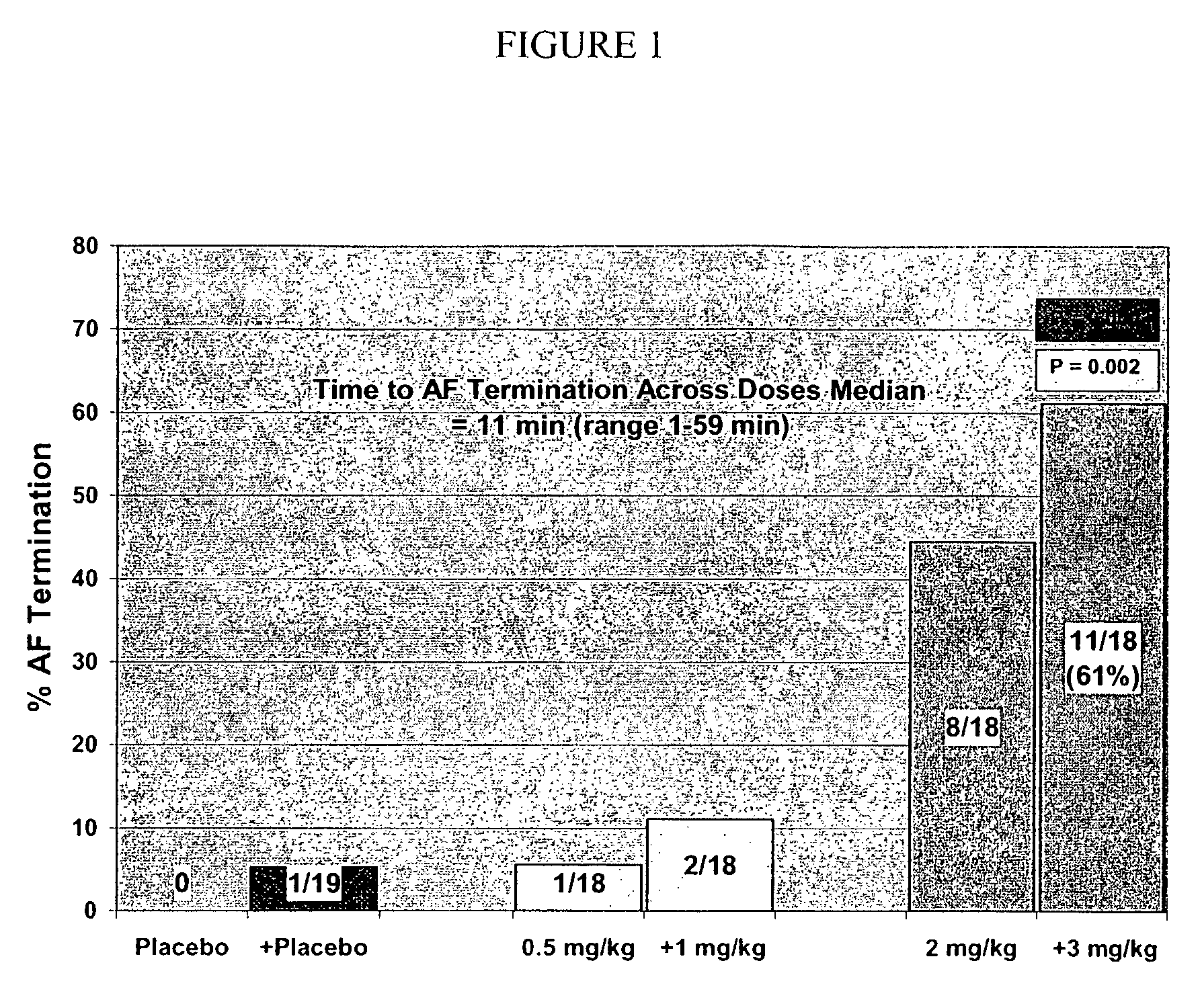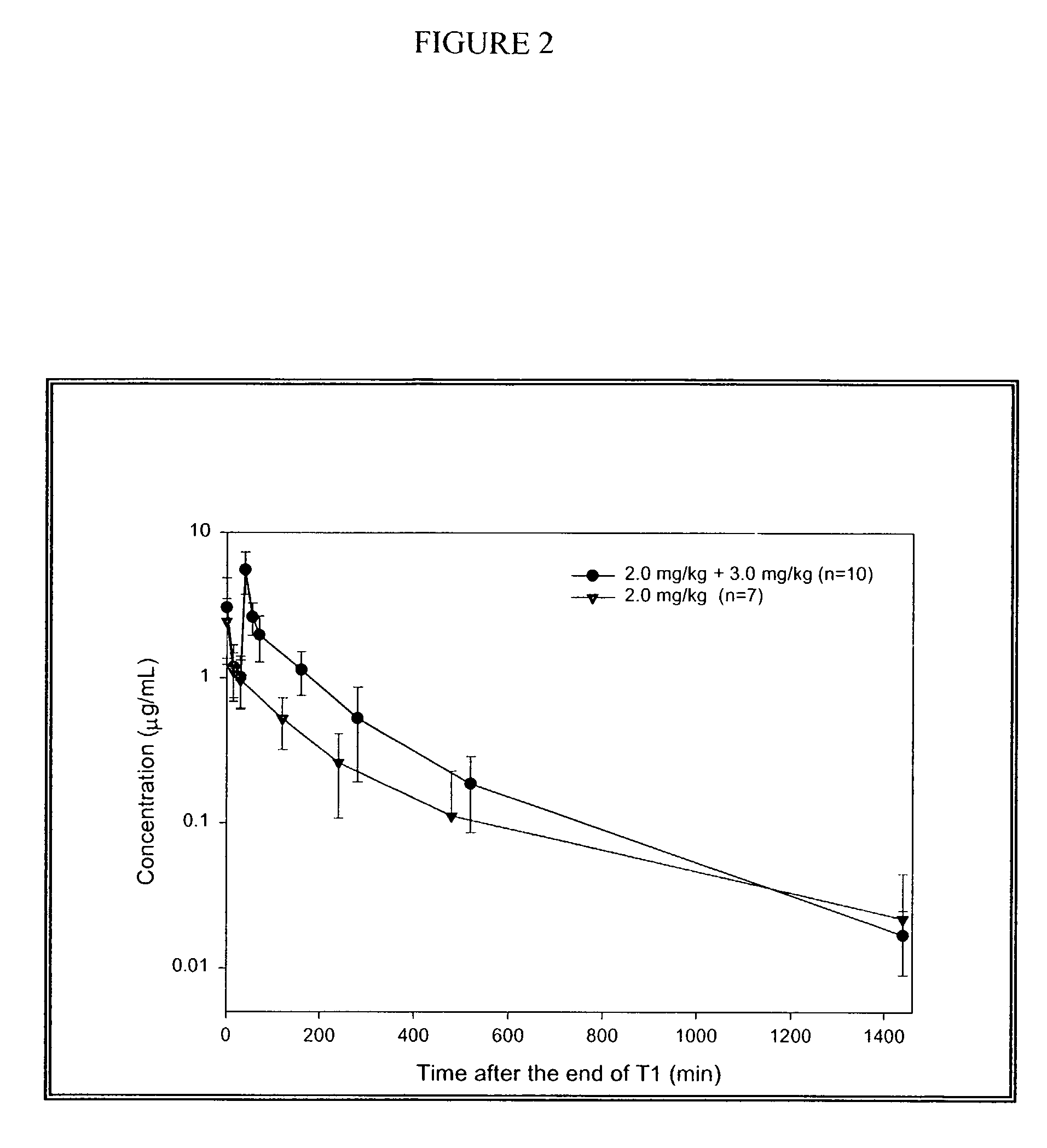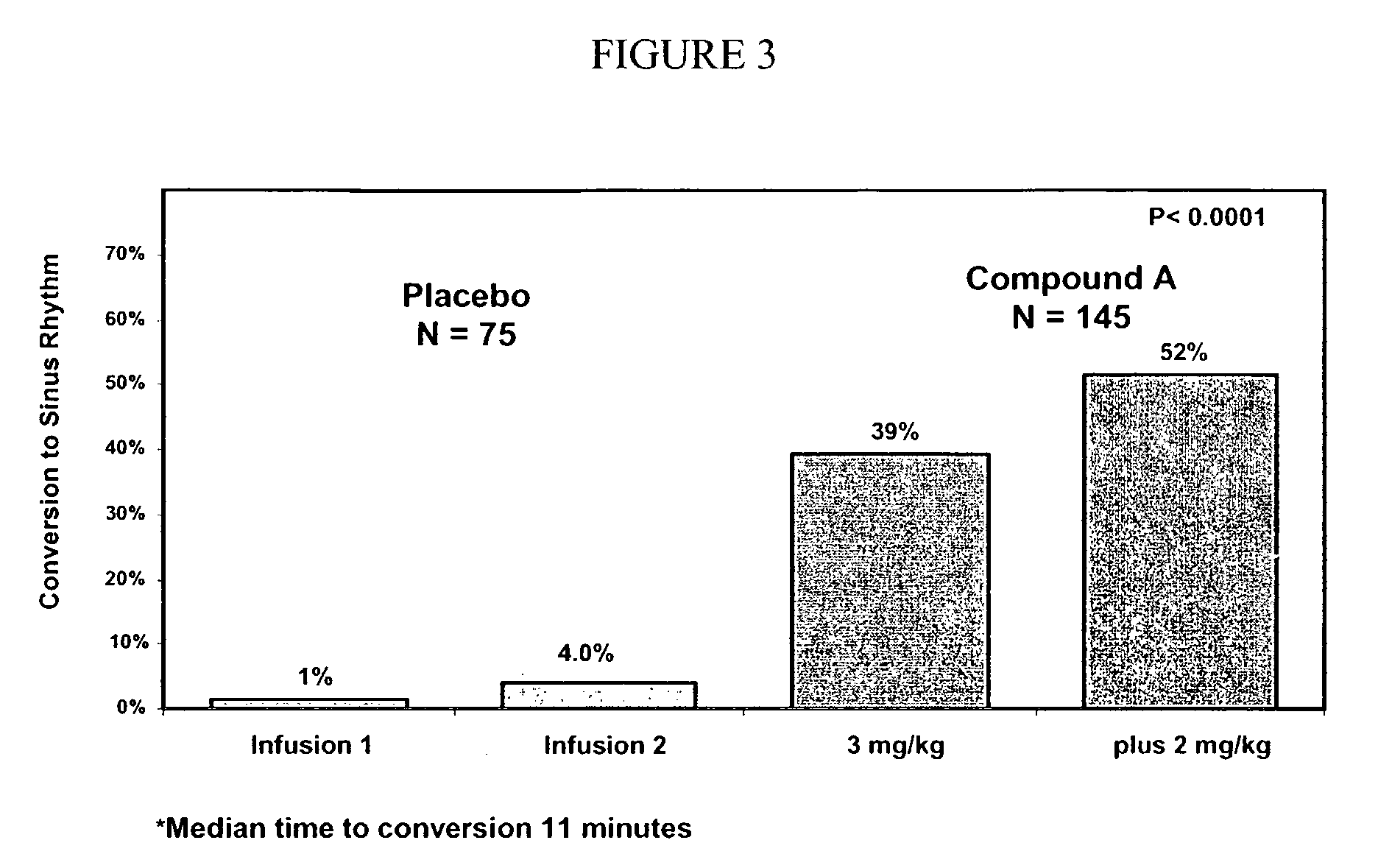Dosing regimens for ion channel modulating compounds
a technology of ion channel modulation and dosing regimen, which is applied in the direction of biocide, drug composition, cardiovascular disorder, etc., can solve the problems of sudden death and complex treatment of arrhythmias
- Summary
- Abstract
- Description
- Claims
- Application Information
AI Technical Summary
Problems solved by technology
Method used
Image
Examples
example 1
An Example of the Electrophysiological Effects of Compound A on Human Cardiac Electrophysiology
[0176]This example provides the results of a study conducted to determine the electrophysiological effects of two intravenous doses of COMPOUND A.
Inclusion Criteria for the Study:
[0177]Patients in the study required electrophysiologic studies (with or without radiofrequency ablation) and were from 18 to 75 years of age.
Exclusion Criteria for the Study:
[0178]Subjects having left ventricular ejection fraction of less than 45%; prior myocardial infarction; or coronary heart failure.
[0179]Subjects having more than 10 minutes of atrial fibrillation prior to or during the study.
[0180]Subjects having prolonged QT, sick sinus syndrome, or bradycardia.
[0181]Subjects taking any antiarrhythmic or cardioactive drug within 5 half-lives (such as beta blockers, calcium channel blockers, or digoxin).
Measurements of Electrophysiological Effects:
[0182]Following the study and ablation (if applicable), the at...
example 2
Treatment of Acute Atrial Fibrillation
[0224]This was a randomized, double-blind, step-dose, placebo-controlled, parallel group study on humans. Fifty-six patients with atrial fibrillation of 3 to 72 h duration were randomized to one of two COMPOUND A dose groups or to placebo. The two COMPOUND A groups were RSD-1 (0.5 mg / kg followed by 1.0 mg / kg) or RSD-2 (2.0 mg / kg followed by 3.0 mg / kg), doses given by intravenous infusion over 10 min. The primary endpoint was termination of atrial fibrillation during a 10-min infusion or the subsequent 30-min. Secondary endpoints included the number of patients in sinus rhythm at 0.5, 1 and 24 h post-infusion and time to conversion to sinus rhythm. RSD-2 dose showed significant differences over placebo in: 1) termination of atrial fibrillation within 30-min 61% vs. 5%; p=0.0003); 2) patients in sinus rhythm at 30 min post-dose (56% vs. 5%; p=0.0008); 3) patients in sinus rhythm 1 h post-dose (53% vs. 5%; p=0.0014), and 4) median time to achieve c...
example 3
Treatment of Recent Onset Acute Atrial Fibrillation
[0251]This study was conducted to assess the effectiveness and safety of COMPOUND A in the conversion of atrial fibrillation to sinus rhythm in humans.
[0252]The primary endpoint of this study was the proportion of patients with atrial fibrillation duration of 3 hours to 7 days who had treatment-induced conversion to sinus rhythm within 90 minutes of treatment. Secondary endpoints included the time-to-conversion of atrial fibrillation to sinus rhythm in patients with atrial fibrillation duration of 3 hours to 7 days; the proportion of patients with atrial fibrillation of 8 to 45 days who had treatment-induced conversion to sinus rhythm within 90 minutes of treatment, and the proportion of patients in the entire group with atrial fibrillation of 3 hours to 45 days who had treatment-induced conversion to sinus rhythm within 90 minutes of treatment.
[0253]336 patients were randomized in a 2:1 ratio of COMPOUND A to placebo (221 patients ...
PUM
| Property | Measurement | Unit |
|---|---|---|
| concentration | aaaaa | aaaaa |
| concentration | aaaaa | aaaaa |
| concentration | aaaaa | aaaaa |
Abstract
Description
Claims
Application Information
 Login to View More
Login to View More - R&D
- Intellectual Property
- Life Sciences
- Materials
- Tech Scout
- Unparalleled Data Quality
- Higher Quality Content
- 60% Fewer Hallucinations
Browse by: Latest US Patents, China's latest patents, Technical Efficacy Thesaurus, Application Domain, Technology Topic, Popular Technical Reports.
© 2025 PatSnap. All rights reserved.Legal|Privacy policy|Modern Slavery Act Transparency Statement|Sitemap|About US| Contact US: help@patsnap.com



